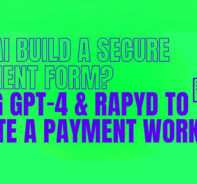COVID-19: A golden opportunity for SMBs?
The COVID-19 outbreak has led to an explosion in online shopping. With high streets shut for months, and many bricks and mortar businesses unlikely to recover even after restrictions are lifted, online shopping is increasingly becoming the norm. At the peak of the pandemic, 33.3% of UK sales were taking place online, up from 20% in February 2020. This migration is likely to be permanent for many customers who will be unwilling to give up the convenience and choice of online shopping.
While this is bad news for the high street, it could provide a golden opportunity for SMBs who are willing to adapt. Our recent study into the effects of quarantine on SMBs showed that 65% of businesses believe that the lockdown has opened up new business opportunities for them. eCommerce is the key to this, with 44% of companies who increased their eCommerce presence during lockdown planning to continue these measures after the pandemic is over.
In many ways, selling online is a much simpler option. Gone are the days of worrying about rent and utility bills. However, eCommerce is not without its hurdles, and requires a little more than just adding a shopping cart to your website. In order to process debit and credit card transactions and sell online, you will need a payment gateway.
While the inner workings of a payment gateway are fairly complex, the concept itself is relatively simple.
What is a payment gateway?
A payment gateway encrypts, forwards and authorises card payments, which allows you to process your customers’ purchases in a secure way. Customers will be asked to input their credit or debit card details, which will be encrypted along with any other sensitive information, such as personal data, and securely forwarded to the payment provider.
This will work whether you are taking the payment online, face to face, or over the phone. A payment gateway is not something you need to set up from scratch. It will be supplied by your payment provider.
How do payment gateways work?
To complete a payment, the seller must have both a merchant account and a payment gateway. A payment gateway provides a vital extra layer of security for both buyers and sellers. It will check the legitimacy of a payment by contacting the issuing bank, and only authorise payments which are deemed to be safe.
You are probably used to using a card reader in a shop and having to wait a few seconds for your payment to be accepted. A payment gateway is simply the virtual equivalent of this.
Once the payment has been authorised, the transaction will move from the payment gateway to the merchant account. From here, the payment is automatically submitted to the merchant bank, also known as the acquiring bank. Finally, the money is transferred to your business bank account. For your business to be able to accept online payments, your payment gateway must be compatible with both the customer account and the merchant account.
What should I look for in a payment gateway?
Online shopping is all about convenience, so you want to choose a payment gateway that will streamline the process as much as possible. The main thing to look out for is the settlement time. This is the amount of time the service provider takes to pay you the money after a transaction is authorised. Cash flow is essential for keeping a business running smoothly, so you should look for a provider with a settlement time of no more than 48 hours.
How do I get a payment gateway?
If you would like to know more about adding a payment process to your website, you can find further information on our payment gateways page. Alternatively, you are more than welcome to contact us and a friendly member of our team will be more than happy to guide you through the process.
Our payment gateways are designed to fit seamlessly with your transaction process, and accept credit and debit card payments from all major debit and credit card issuers (including American Express, Visa and Mastercard).
Subscribe Via Email
Thank You!
You’ve Been Subscribed.



